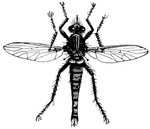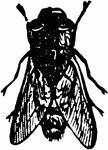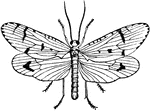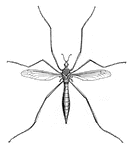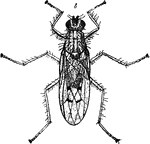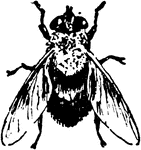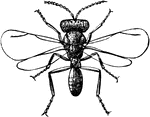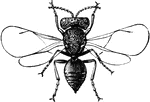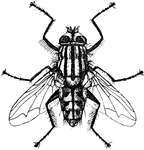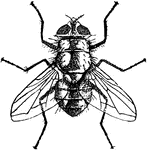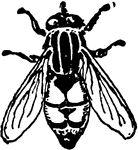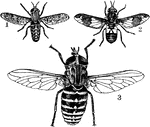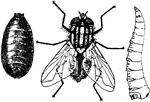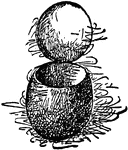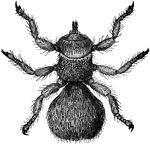This gallery includes 949 illustrations of other orders of insects.
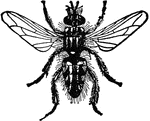
Blow Fly
"Blow Fly is the name popularly given to such two winged flies as deposit eggs in the flesh of animals,…

Boat Fly
"They carry the air required for their respiration in a space left for this purpose between the wings…

Mature Botfly
"After attaching themselves to the walls of the stomach, the botfly larva are nourished by the blood…
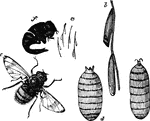
Breeze Fly
"a, eggs of the Breeze-fly; b, the same magnified; c, larva, or bot; d, chrysalis; e, perfect insect;…
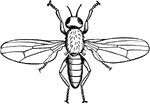
Cheese Fly
Piophila casei. Similar to the house-fly in appearance, but much smaller, and the only way to protect…
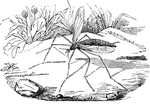
Crane Fly
"The tipulidae have the proboscis short, terminated by a pair of fleshy lips, inclosing two bristles."…

Crane Fly
Large flies with many-jointed, slender, thread-like antennae and scarcely shorter maxillary palpi.

Day Fly
A May fly. So called because however long they may live in the larva state, in their perfect form they…

Sarracenia Flesh Fly
"Sarracenia Flesh-fly (Sarcophaga sarraceniae). a, larva; b, pupa; c, fly; d, head and prothoracic joints…
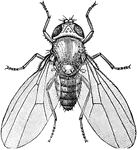
Common Fruit Fly
The Common Fruit Fly (Drosophila melanogaster) is an insect in the Drosophilidae family. The species…

Hessian Fly
The Hessian-fly of the Cecidomyia destructor species; On the left, a healthy stalk of wheat, and on…
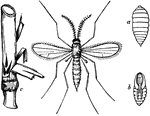
Stages of the Hessian Fly
Now known as Mayetiola destructor: "Hessian Fly (Cecidomyia destructor). a, larva; b, pupa; c, infested…
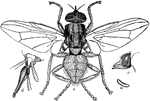
Horn Fly
This insect derives its common name from the fact that it seems to prefer clustering in great numbers…

Horse Fly
The horse fly has but one pair of developed wings, the second pair being represented by a pair of balancers:…

Horse Fly
The horse-flies or tabanidae, comprise another set of troublesome creatures, of medium or large…
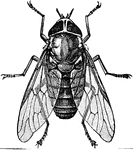
Dorsal View of Horsefly
Tabanus americanus is a species of biting horsefly in the Tabanidae family of horseflies. It was also…
Horse Fly Larva
The larvae are elongated, somewhat flattened creatures, some living in the soil, some in water, and…
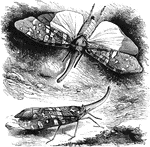
Lantern Fly
"The family of Fulgorina includes the Lantern-flies, of which a large species inhabiting…

Lantern Fly
Lantern-flies may be found on the under side of leaves of various plants, particularly grape, sucking…

Lantern Fly
Lantern-flies may be found on the under side of leaves of various plants, particularly grape, sucking…

Lantern Fly (Fulgora Lanternaria)
"The Lantern-fly is found in large numbers in South America. This remarkable insect enjoys a great renown…
